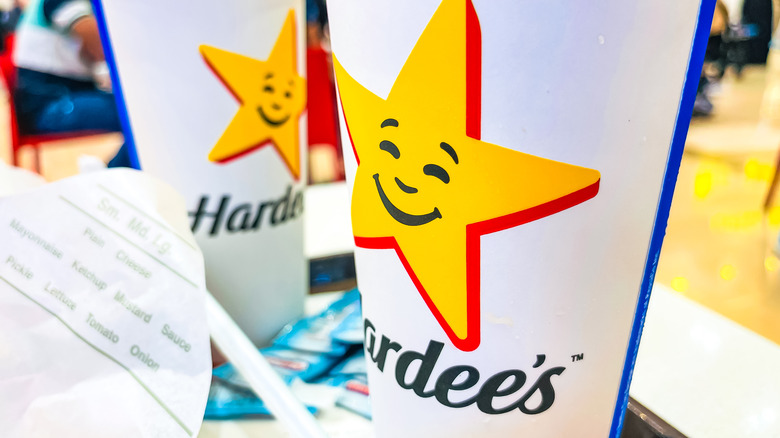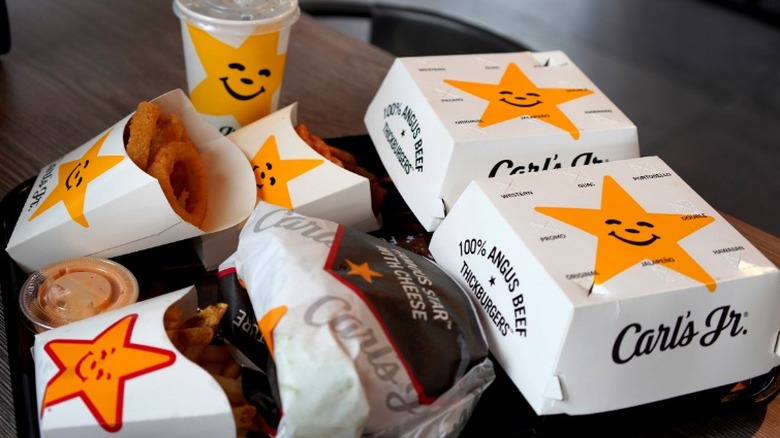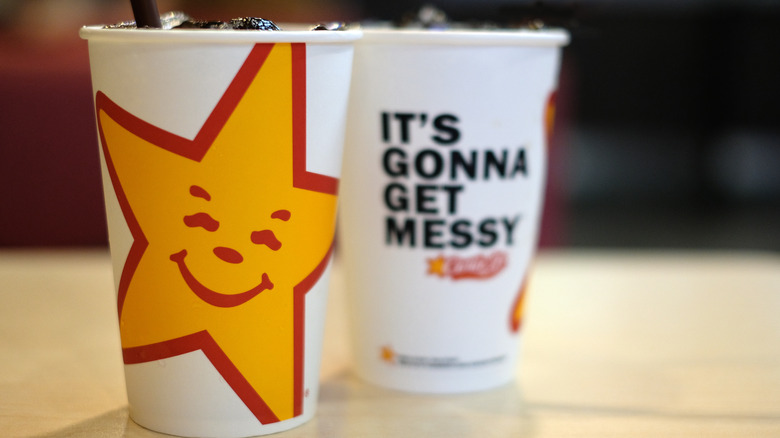The Reason Why Hardee's And Carl's Jr. Are So Similar
Carl's Jr. began as a simple hot dog cart in Los Angeles in 1941, opened by Carl and Margaret Karcher using all of their savings money and a loan against their car, per Carl's Jr. With the success of the hot dog stand, the couple opened their first two Carl's Jr. restaurants in the 1950s, and two more restaurants popped up by 1960 along with the restaurant's iconic yellow star sign, Carl's Jr. recalls. Also in the 1960s, Karcher created Carl Karcher Enterprises, Inc. (CKE) and opened all future restaurants under his new company.
Around the same time in Greenville, North Carolina, the first Hardee's was opened on September 3, 1960 by Wilber Hardee, and its menu consisted of milkshakes for 20 cents, hamburgers for 15 cents, and fries for 10 cents, according to Hardee's. At least 200 more Hardee's locations had been opened by 1970, and after a decade and change of rapid growth, the 2,000th location opened in the 1980s. Carl's Jr. and Hardee's started out as two completely separate businesses on opposite sides of the country, so why are they so similar today — to the point that some people believe they are part of the same chain?
Hardee's was purchased by Carl's Jr.'s parent company in 1997
Over time, Hardee's dominated the South and Midwest of the United States, while Carl's Jr. was preoccupied with the West. Interestingly, Hardee's was only owned by original founder Hardee until around 1963, when he lost his majority stake in the company during a poker game to two investors who had helped him with his business early on, according to The Los Angeles Times. The hapless entrepreneur sold his remaining shares shortly after and parted ways with the restaurant bearing his name. Moving on without him, by the 1990s Hardee's had around 2,500 locations, and in 1997 The New York Times reported that it had been purchased for $327 million by competitor CKE, the parent company of Carl's Jr.
It only makes sense that with CKE's purchase, the company would rebrand Hardee's to appear similar to Carl's Jr., after which both restaurants continued making their mark on the fast food industry with innovative menu items. Carl's Jr. welcomed hand-scooped milkshakes, the $6 burger, and charbroiled turkey burgers — brand new to the fast food scene at the time — to its menu in the 2000s and introduced plant-based burgers and first-of-their-kind CBD-infused burgers to the menu in the 2010s, per Carl's Jr. In a similar but singular innovation in the 2000s, Hardee's revealed its iconic ⅓-pound Thickburger and its double, the Monster Thickburger, and dabbled in desserts with the 2010 debut of its Froot Loops Mini Donuts, according to Hardee's.
Hardee's and Carl's Jr. after merging
Together, Carl's Jr. and Hardee's have around 3,800 restaurants spanning 44 U.S. states and 43 other countries worldwide, per Carl's Jr. Before CKE's purchase, Hardee's made "charco-broiled" burgers using char-grillers, and their unique flavor was extremely popular at the chain, according to Consumer Reports. Meanwhile, in the 1970s, Hardee's added biscuits that were made from scratch to its menu.
When the two chains were joined under CKE, their menus mingled, giving Carl's Jr. more breakfast options and Hardee's more lunch and dinner options. Throughout the 2000s, several Hardee's locations were either closed or turned into Carl's Jr. restaurants, and the Hardee's menu and Carl's Jr. menu are still relatively similar today, with both chains offering charbroiled burgers, fried chicken tenders, biscuit sandwiches, french fries, ice cream shakes, and more.
One way Hardee's and Carl's Jr. still seem to differ is by the U.S. regions in which either restaurant chain is primarily located. Mostly sticking to its roots, Hardee's appears in 31 U.S. states primarily in the eastern half of the nation, but there are some locations as far west as Montana and Wyoming. On the other hand, Carl's Jr. has stores in just 14 states, including Hawaii, Alaska, and only as far east as Texas. Interestingly, the only two U.S. states where the sibling restaurants both reside, each recognizable by that iconic star, are Wyoming and Oklahoma.


